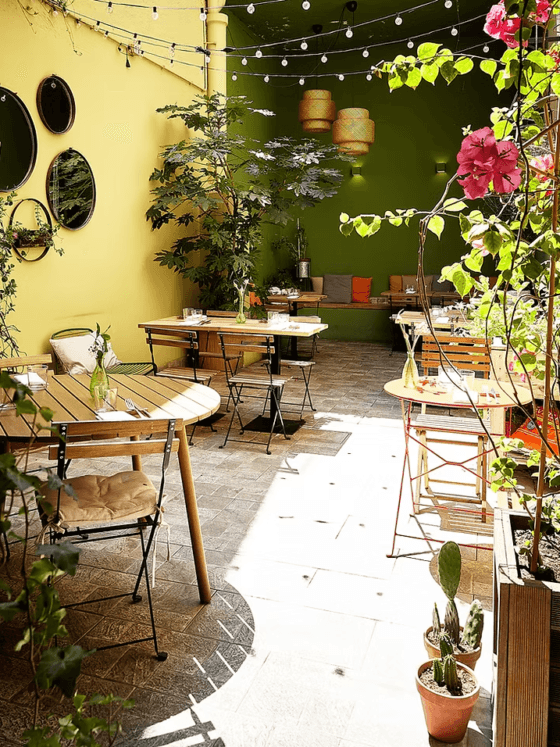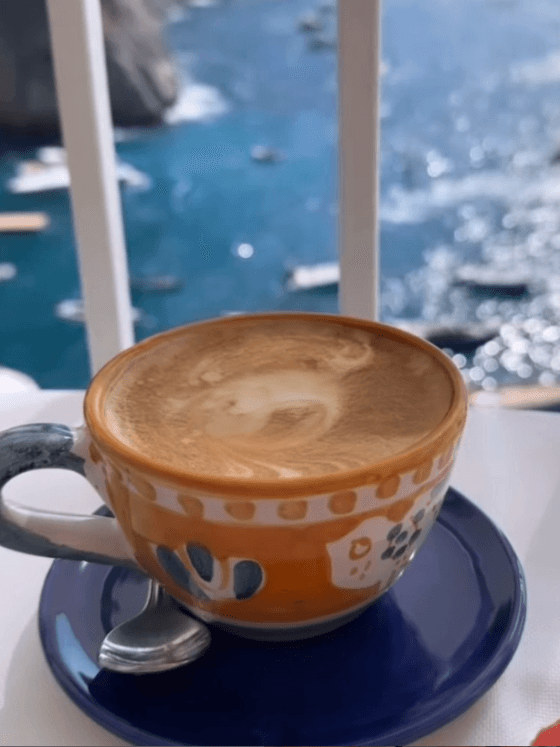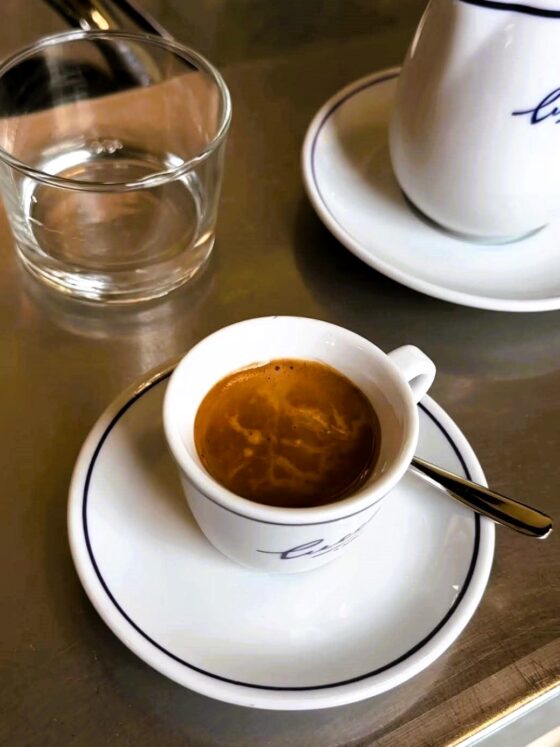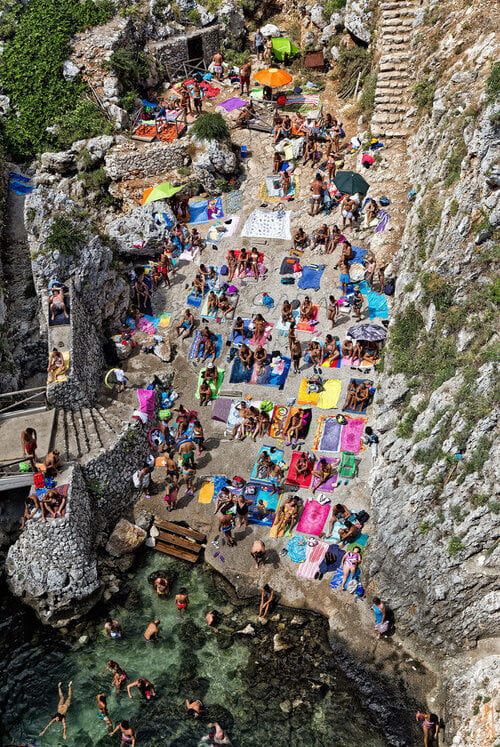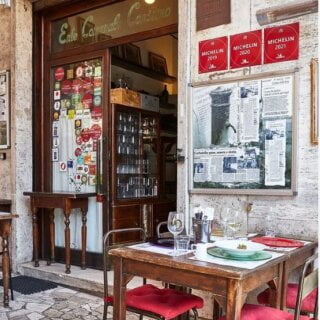How Italians Do it: a Small Guide to Italian Bars and Restaurants
This is the beauty of a country where “going to the bar” means spending a minute or two there, and then going for a walk or to the piazza.
In Italy, the term “bar” encompasses many different things. Often, when we talk about Italian bars, we mean a place to “have a coffee,” but despite being called a bar, where we have breakfast, we won’t have an aperitif, because that same place is only what is more commonly known worldwide as a “coffee shop.” Of course, that’s not always the case.
But there are some tricks to understand what type of Italian bar you are in. For example, if there are croissants on display, you can have breakfast, and if there are also bottles of alcohol or wine, it’s a place where you can have an aperitif. But there are also bar/pastry shops, bar/gelato shops, or bar/pastry/gelato shops. This perfect trio allows you to have coffee with a pastry and gelato. And it can happen (the epitome of taste) that they also serve appetizers before dinner or lunch, or bitter liqueurs for after-dinner.
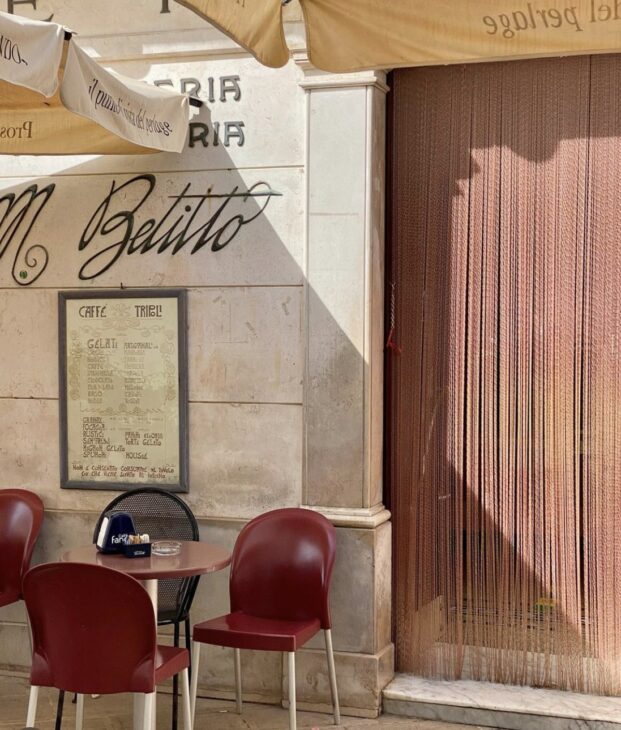
Italian Bars – Not your Typical Bar
In bars, you can often eat, more commonly at lunch than at dinner. You can find what is also known as a “hot table,” which consists of a number of hot dishes served either at a buffet or displayed in a showcase. You can ask the barista for these dishes, and the barista will prepare them for you, asking, “Are you eating here or taking it away?”
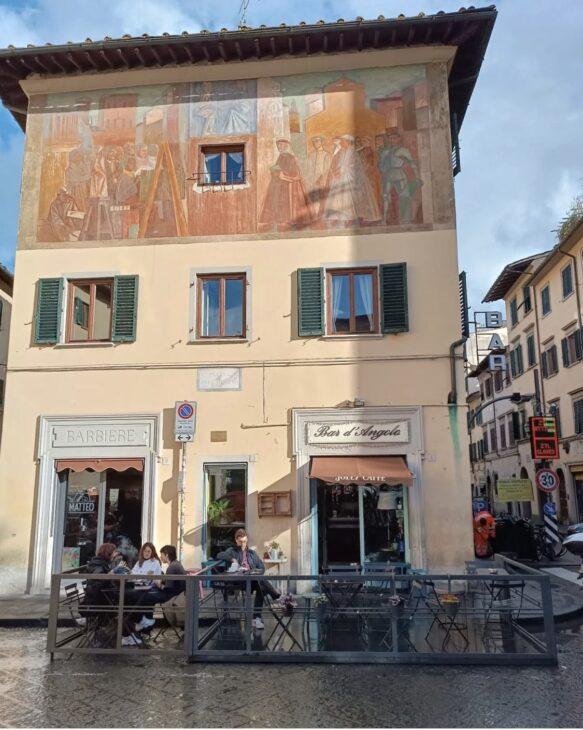
In most cases, Italian bars are places where you can spend the entire day, from early morning at six o’clock to midnight. However, unlike in most countries in North America and Northern Europe, this doesn’t mean there are comfortable armchairs and small tables – quite the opposite. There is often nothing nice to sit on, except for an uncomfortable chair and a small table. This is the beauty of a country where “going to the bar” means spending a minute or two there, and then going for a walk or to the piazza.
Coffee and Cappuccino at Italian Bars
Espresso coffee should be taken like medicine. You walk into Italian bars, approach the counter, and say, “Un caffè!” if you want a single espresso. You can sweeten it and drink it right there at the counter, in an average time ranging from five to twenty seconds. Two or three sips, or even just one, are fine. Italians may request various types of coffee: macchiato, frothy, long, short, in a glass, and so on. There’s no menu or list, but don’t worry; it’s a universal language that applies to all non-chain Italian bars. Just be decisive and know in advance what type of coffee you want.
Even the classic breakfast, cappuccino and croissant, is enjoyed at the counter. In most cases, there’s no need to sit at a table. The true Italian experience is to stand there, at the counter, chat with the barista, drink, eat, and pay. Of course, for both coffee and cappuccino, you have the option to sit at a table. Often, there is a table, and sometimes there is a waiter to serve you, but not always. When you don’t see anyone around, it’s better to do it yourself.
Spritz and the Art of the Aperitivo
Let’s start with the basics: the spritz is an aperitif. As such, it should be enjoyed before meals, not during or after. Its sweetish flavor doesn’t pair well with dishes like spaghetti alle vongole or meatballs in sauce. It’s a refreshing drink to be enjoyed all year round, both in summer and winter. It’s typical to a region in Italy, which is Veneto (but it can be enjoyed all over Italy), and pairs perfectly with the typical Italian aperitif snacks: potato chips (from a bag), pretzels, olives, and taralli. These snacks, mind you, should not be paid for. They are generously and complimentarily served by the bartender. Sometimes, though, when seated at a table, the waiter might ask if we’d like to “snack” on something, and then they’ll propose “a platter,” which is, in most cases, a mix of cheeses and cured meats, or they might offer small pizzas or sandwiches. If we accept, it’s very likely this platter will be added to our bill at an average price of €5 per person.
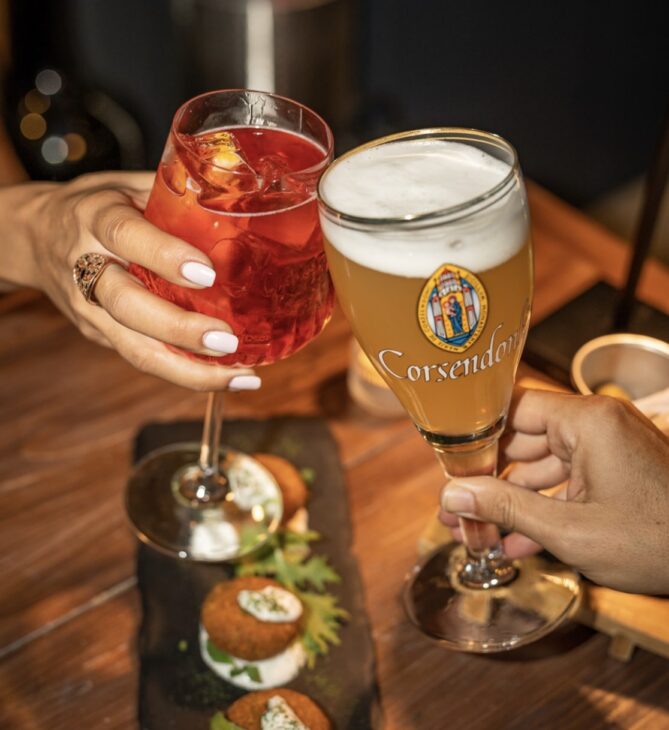
Don’t like spritz? No worries, neither do I! There are variations for those who don’t enjoy sweet flavors. Among them, there’s the Campari Spritz, a magical blend of Campari Bitter, prosecco, and soda. Served of course, with ice and the obligatory orange slice. But don’t stop at spritz because Italians also enjoy a lot of beer and wine, both white and red, as aperitifs. Remember not to act like tourists: finish your spritz before leaving the bar, and don’t take it with you to the restaurant table. But most importantly, don’t order a spritz during meals.
At the end of the meal, after desserts and fruit salads, you can order coffee, of course, but not cappuccino. Italians drink it almost exclusively in the morning, and they always have it at the bar. Never, ever in a restaurant, and never, ever after meals.
The Restaurant, or: How to Order
To start: First, the appetizers, then the first courses, which would include pasta and risotto, and finally, the main courses. Let’s begin with appetizers. Italians aren’t fond of sharing food as, for example, other cultures might do. However, an exception is made for appetizers. If you’re in a pizzeria or restaurant, you can ask to have the appetizers placed “in the middle” or “in the center.” In other words, you can order, for example, a certain number of supplì, croquettes, fried items, or even a plate of prosciutto, bruschetta, and more, and then share them with your fellow diners. The waiter will bring an empty plate for each of you, and you can happily enjoy the dishes from the plates or trays placed in the center of the table. It’s possible! And you can do this even in a restaurant.
A different story unfolds however when it comes to the first course. Pasta is not shared. It’s very rare, almost unheard of, for a group of ten or twenty people to share a plate of pasta in the center; it’s impossible for a group of four. Each person has their own personal plate of pasta. You can ask your neighbor to taste theirs or offer them a rigatoni from your plate, but nothing more.
For the main courses, on the other hand, you can choose to order one for yourself or share it in the center for those who still have some appetite left.
At the end of the meal, after desserts and fruit salads, you can order coffee, of course, but not cappuccino. Italians drink it almost exclusively in the morning, and they always have it at the bar. Never, ever in a restaurant, and never, ever after meals.
Of course, this article touches on the most important aspects of navigating Italian bars and restaurants, but they are at the core of the Italian dining experience. Yet there are other matters that you will discover through experience alone – for these moments, if you approach them with this guide in mind, genuine curiosity, and respect for your host, you will soon have moments turn into memories, and ones you will always cherish.


